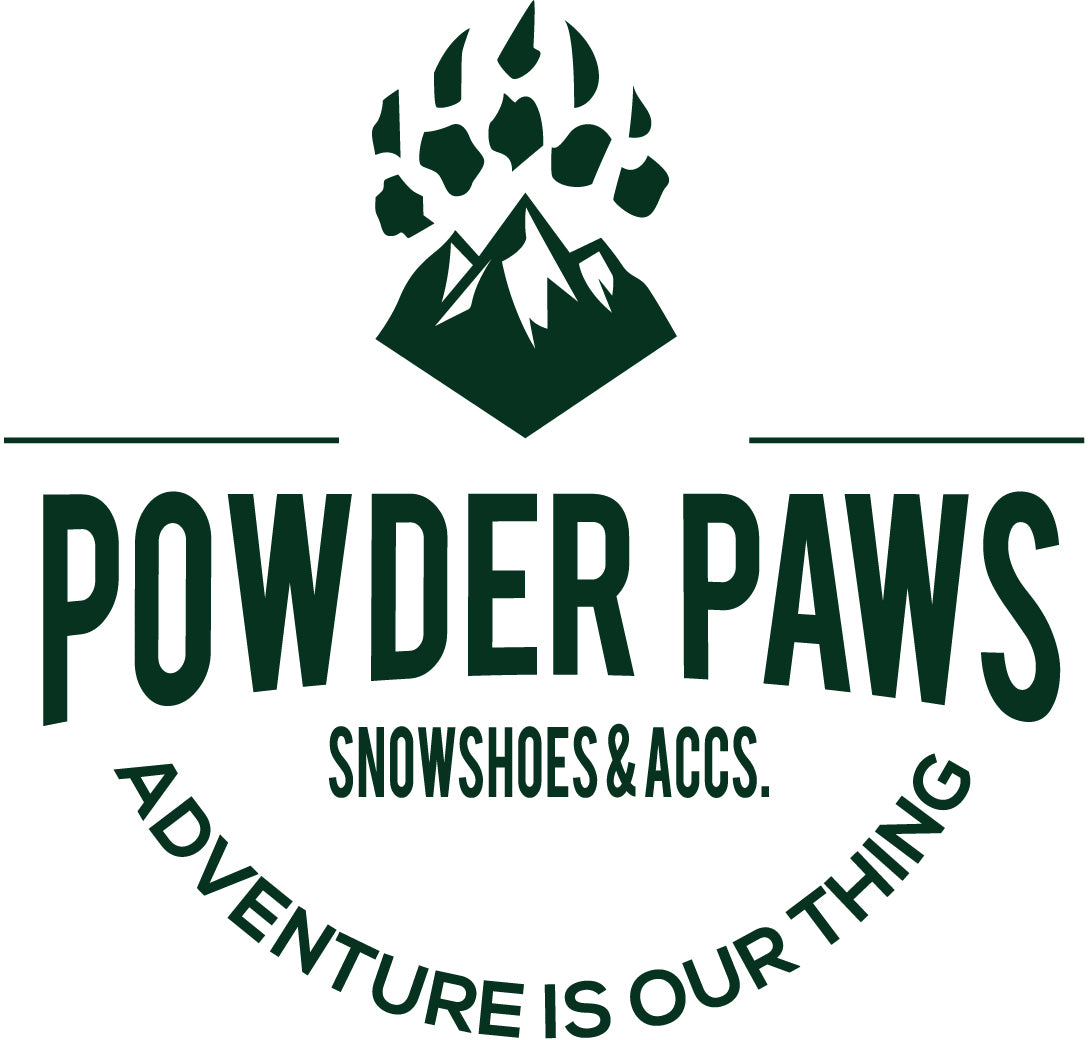Snowshoe Sizing: How to choose the best size?
The best way to ensure a great snowshoeing experience (other then being dressed appropriately with some hot drinks) is having the perfect length snowshoe for the conditions. One of the snowshoes‘ biggest jobs is to provide “flotation” to stop you from sinking too deeply into the snowpack, so the amount of flotation you need is what influences your choice of snowshoe length. You ideally want to pick a snowshoe that will provide you with just enough “flotation”
on the snow but still will enable you to maneuver on the trails. There are two factors that determine the right size of snowshoe that will be most fitting for you. The first is to consider your body weight PLUS the gear and clothing you’ll be wearing on most of your snowshoeing adventures. The second is t he snow conditions.
he snow conditions.
Sizing by Weight
The more you weigh, the more floatation you need. Greater weight on the snowshoe requires more surface area on the snow to maintain proper flotation. The total weight is calculated by adding your body weight and a combined estimated weight of your clothes, boots and any additional gear you may have such as a backpack.
Sizing by Snow Condition
Consider the type of snow conditions you plan on snowshoeing majority of the time. As well it will help to consider where you will snowshoe within your local environment. Will this be off-trail most of the time where the snow is fresh, deep and powdery? Or will you be on well used trails where the snow is compact? Examining the snow conditions will assist you in picking out the right size snowshoe for your adventure. The idea is to pick a snowshoe that will work majority of the time. In general, the deeper and drier the powder, the larger the size of snowshoe that i s required. The wetter or more compact the snow conditions are, a smaller snowshoe will be more ideal. If you plan on sticking to groomed trails you can choose a shorter snowshoe. The shorter the snowshoe, the easier it will be to maneuver in tight trails and the weight will be less. If you don’t plan on being in deep powder you can get away with a shorter length.
s required. The wetter or more compact the snow conditions are, a smaller snowshoe will be more ideal. If you plan on sticking to groomed trails you can choose a shorter snowshoe. The shorter the snowshoe, the easier it will be to maneuver in tight trails and the weight will be less. If you don’t plan on being in deep powder you can get away with a shorter length.
Our sizing table below shows recommended sizes for your total weight including gear. If your total weight is in-between the listed snowshoe sizes, take into consideration the snow conditions you plan on snowshoeing in majority of the time. Rule of thumb, size down if you plan on being in more compact snow conditions. If snowshoeing only groomed compact trails you can move down a complete size from the recommended size snowshoes on the table.
|
|
90-120lbs
|
|
|
120-160lbs
|
|
|
150-230lbs
|
|
|
200-300lbs
|
Is there a Difference Between Men’s Snowshoes and Women’s Snowshoes?
All of our snowshoes are unisex. We design our Canadian snowshoes to have a narrow gate allowing for a natural stride. Our largest 36” snowshoes are slightly wider than the other models to allow for the additional flotation required for the extra weight nonetheless still resulting in a natural and efficient gait for both men and women.
Can Snowshoes be too big?
It may be tempting to order the largest size snowshoes you can find in hopes of that once-a-year large snow fall. However, if you spend 90% of your time snowshoeing on groomed compact trails you will spend 90% of the time wishing you had the smaller snowshoes. Remember that with a larger snowshoe comes more flotation, however it can also brings extra weight and less maneuverability.

 he snow conditions.
he snow conditions. s required. The wetter or more compact the snow conditions are, a smaller snowshoe will be more ideal. If you plan on sticking to groomed trails you can choose a shorter snowshoe. The shorter the snowshoe, the easier it will be to maneuver in tight trails and the weight will be less. If you don’t plan on being in deep powder you can get away with a shorter length.
s required. The wetter or more compact the snow conditions are, a smaller snowshoe will be more ideal. If you plan on sticking to groomed trails you can choose a shorter snowshoe. The shorter the snowshoe, the easier it will be to maneuver in tight trails and the weight will be less. If you don’t plan on being in deep powder you can get away with a shorter length.